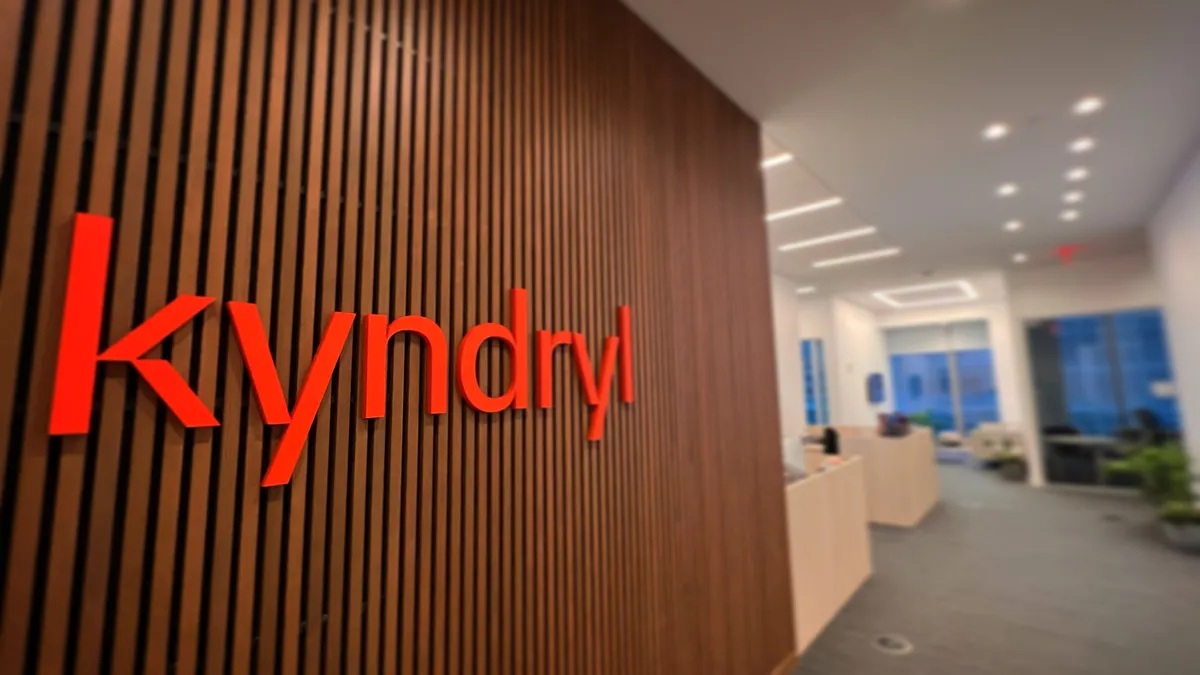This is a part of a series of stories featuring CIO Dive's business technology trends for 2018. You can find the rest of the trends here.
The last few years were dominated by cloud migrations, and the virtual platform is set to serve as the foundation for the modern digital age.
Most companies are already on the cloud and preparing for what the next wave of cloud technology can do for business. In the coming year, the new cloud focus will settle on diversity of services and products and interoperability across platforms.
As the market changes, so too will its players, and 2018 will bring significant maturation to cloud portfolios and mid-sized players. Here are five trends to look forward too:
1. The cloud is not just about storage
For many companies, the cloud started off as Infrastructure as a Service (IaaS), but the cloud in 2018 is, and should be, more than a repository for company data. For example, these are just some of the products offered by AWS, the IaaS market dominator.
It is more difficult imagining what service the cloud provider does not have rather than what it does. The 20 categories of products contain anywhere from one to 15 products and tools. And AWS isn't even a player in the Software as a Service (SaaS) market, which Microsoft Azure dominates, followed by Salesforce, SAP and Oracle.
Cloud vendors can no longer just have a reliable cloud portfolio; they need a diversified one, with a host of Big Data, AI and ML, security, developer, mobile, management and storage tools.
There are enough market players and cloud products now that customers have the freedom to demand the tools that best fit their needs. IaaS providers not able to constantly improve their offerings while accommodating ever-changing business demands will face a costly reckoning.
2. Living on the cutting edge ... of computing
Edge computing optimizes cloud computing by forgoing processing in the data center or cloud itself, instead analyzing data locally and in real-time. For example, autonomous vehicles will require significant amounts of edge computing because of the need for real-time understanding.
The extra seconds or milliseconds it takes to collect data, send it to the cloud for analysis, process it and then send it back is risky in an environment where the car needs fast response times, according to experts. And a loss of connectivity in such a situation or strained bandwidth from a dense collection of autonomous vehicles could prove catastrophic.
Gateway hardware's ability to aggregate data and analyze it in a local mini cloud has followed the sharp increase of devices connected to the internet, according to the report. The IoT is expected to boom in 2018 and the following years, and companies with connected devices will need edge computing to drive faster, better insight.
By pushing cloud and edge computing in conjunction, companies will improve their service-oriented models with "a delivery style that allows for executions of disconnected aspects of cloud service," according to Gartner
3. Microsoft and Google have nowhere to go but up
The No. 2 and No. 3 cloud providers, whose cloud portfolios matured greatly throughout 2017, are gunning for No. 1 AWS. Microsoft and Google are the only providers to hold a significant share in the IaaS, PaaS and SaaS public cloud markets.
Google executives expect the company's cloud business to generate as much revenue as its advertising arm — though the company has extended the timeline for this goal past 2020 — and SVP of Google Cloud Diane Green is optimistic enough to posit that they may reach No. 1 cloud provider by 2022.
Microsoft, meanwhile, has made Azure the backbone of its digital future, and widespread familiarity with its other enterprise products makes the platform a natural extension for many companies.
Smaller cloud players, such as IBM and Oracle, will certainly keep plugging along, but Alibaba is worth paying special attention to. The Chinese company has seen steady growth in its cloud business worldwide and is looking to break more into the American market. If it comes in with lower prices and more tailored offerings, Alibaba could find success appealing to SMBs.
4. Expect Kubernetes to keep making waves
Kubernetes appeared in headlines a lot more in 2017, with tech companies in succession announcing adoption of the open-source container orchestration system, including AWS, Microsoft and Oracle.
Now that it's gotten the backing of all the major cloud vendors, and scores more behind them, the Kubernetes team needs to both maintain the success that got it there and improve the project before competitors curb the current momentum.
As more services are built on the containerized infrastructure, "Kubernetes apps" for functions such as logging, configuration and security will abound and vendors will use containers to deliver applications over virtual machines, according to CoreOS.
As containerization spreads to more businesses and clouds, security will undoubtedly raise some questions. This year is barely a week in and news of widespread vulnerabilities has already racked the industry, so the project needs to stay ahead of the curve with its patches and upgrades.
5. Interoperability within and across the cloud
Most companies take a hybrid cloud approach, but juggling multiple clouds can prove difficult — and a universal cloud management tool is not worth waiting on. Hybrid stacks, such as Azure Stack and VMware Cloud on AWS, facilitate the hybrid cloud model, but there is still work to be done.
The growing environment demands a more heterogeneous cloud, with tools that work across vendors. Such interoperability would connect business operations within the hybrid cloud model and between businesses.
While cloud vendors may be unlikely to forgo market leads at the risk of similarly boosting competitors, interoperability measures can serve the business. Customers may forgo arrangements with incompatible clouds in favor of more convenient options.




















